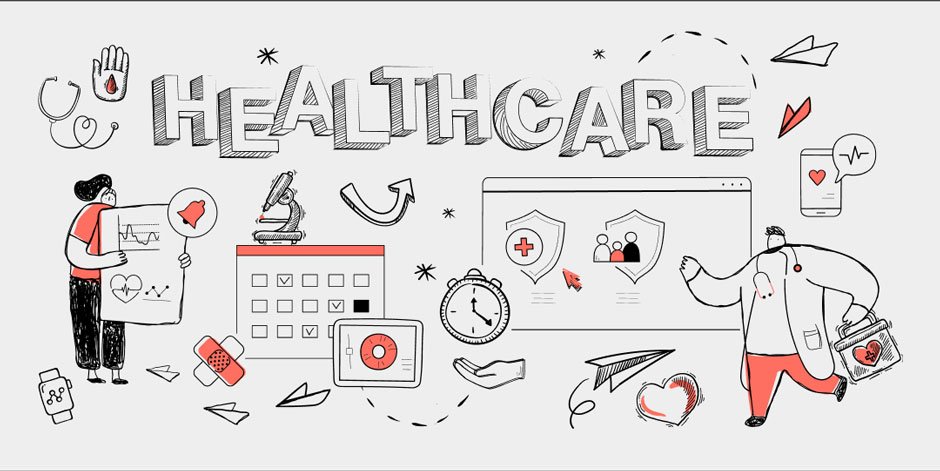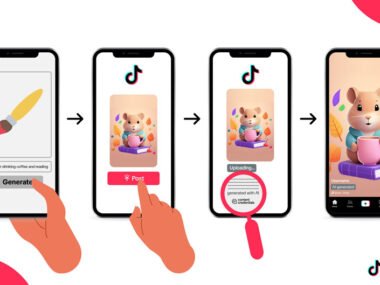
Great healthcare web design services balance functionality, trust, and clarity. Users need fast access to critical information, whether booking an appointment, checking symptoms, or finding a specialist. A strong design ensures the experience is intuitive, accessible, and visually calming—especially important for people in stressful situations.
Trust is essential in healthcare. Design must reflect professionalism, security, and empathy. This means careful attention to color choices, clear typography, and privacy-conscious interactions. A well-structured interface supports both patients and providers through smooth navigation and responsive layouts.
Gapsy Studio understands these needs and applies industry best practices through its healthcare web design services. Their approach includes user research, clear content hierarchy, and mobile-first development to meet the demands of modern users. By combining aesthetics with functionality, they help healthcare brands communicate more effectively and serve patients better. Their work ensures design decisions support user comfort, confidence, and engagement from the first visit to ongoing care.
Why Is Healthcare Web Design So Important Today?
Healthcare web design has become a crucial part of patient communication and care. As more individuals turn to online platforms for medical information, appointment scheduling, and support, the quality of the digital experience can directly impact trust and engagement.
A well-designed healthcare website must be easy to navigate, responsive across devices, and accessible to users of all abilities. It should present complex information clearly and offer fast access to essential services. In a field where urgency and accuracy matter, design plays a direct role in patient satisfaction and outcomes.
For these reasons, many providers invest in professional healthcare web design services. These services help organizations align their digital presence with both patient expectations and compliance requirements. Strong design not only improves the user experience but also supports a brand’s credibility and reputation. In today’s healthcare environment, a thoughtful online experience is no longer optional—it is a necessary part of quality care.
What Do Patients Expect from a Healthcare Website?
Patients today have high expectations when it comes to healthcare websites. They want fast access to information, clear navigation, and a layout that makes important resources easy to find. Whether booking appointments, viewing test results, or reading about health conditions, users expect the process to be intuitive and efficient.
A strong healthcare site should be mobile-friendly, load quickly, and follow accessibility standards to support a wide range of users. Clear content, visual consistency, and secure forms are also essential to build trust and ensure privacy.
To meet these expectations, organizations often rely on professional healthcare web design services. These services help create platforms that are both visually appealing and functionally reliable. When properly executed, the design supports patient needs while reflecting the provider’s brand and values. Meeting patient expectations online is not just about aesthetics—it directly influences satisfaction, loyalty, and the overall quality of care delivered through digital channels.
How Does Gapsy Studio Approach Healthcare Web Design?
Gapsy Studio takes a strategic and user-centered approach to healthcare web design. The process begins with in-depth research to understand patient needs, industry regulations, and the specific goals of the healthcare provider. This helps shape a design strategy that balances functionality with a clean, trustworthy visual style.
One of the key aspects of Gapsy’s healthcare web design services is usability. The team focuses on building intuitive navigation, responsive layouts, and accessible content that works well on all devices. They also ensure that every design decision supports HIPAA compliance and other healthcare standards.
In addition to technical precision, Gapsy Studio prioritizes the user experience by creating smooth workflows for booking appointments, accessing records, and engaging with services. Their healthcare web design services aim to improve both the patient journey and the provider’s digital presence. The result is a platform that builds trust, encourages interaction, and enhances the delivery of care online.
Which UX Features Matter Most in Healthcare Websites?
User experience is especially important in healthcare websites, where clear communication and ease of use can directly impact patient outcomes. Several UX features are essential to ensure a smooth and supportive digital experience.
Accessibility is a top priority. Healthcare websites must be usable by all individuals, including those with disabilities. This includes readable fonts, strong color contrast, and keyboard navigation. Mobile responsiveness is also critical, as many users access health information and services through smartphones.
Another key feature is intuitive navigation. Users should easily find important services such as appointment booking, provider directories, and patient portals. Loading speed, clear calls to action, and streamlined forms also contribute to better engagement.
Finally, content clarity matters. Medical information should be presented in a structured and understandable way. Incorporating these user-focused features through strong healthcare web design services results in a platform that is both reliable and efficient for patients and healthcare professionals alike.
How Do We Ensure HIPAA and Privacy Compliance?
Ensuring HIPAA and privacy compliance is essential in the development of any healthcare website or application. Patient data must be handled with the highest level of security and confidentiality to meet legal standards and protect user trust.
The process begins with implementing secure data storage and encrypted transmission protocols. All sensitive information must be protected both in transit and at rest. Regular audits and risk assessments help identify any potential vulnerabilities in the system.
In addition, user authentication measures such as strong passwords and multi-factor authentication play a key role. Access controls must be in place to ensure that only authorized personnel can view or modify patient information.
Clear privacy policies and consent forms are also critical. Users should be informed about how their data is collected and used. By following strict standards and working closely with legal and IT security teams, healthcare web design services can achieve full HIPAA and privacy compliance.
Can Custom Design Improve Patient Experience and Retention?
Custom design can significantly improve the patient experience and positively influence retention in the healthcare industry. A tailored digital environment allows healthcare providers to meet the specific needs of their audience, leading to clearer communication, easier navigation, and stronger engagement.
When websites and applications are designed with patient behaviors and expectations in mind, users can find information quickly, schedule appointments efficiently, and feel more comfortable interacting with medical services. Personalization, responsive layouts, and intuitive user journeys make the entire digital experience more welcoming and accessible.
Consistency in visual identity and tone also builds familiarity and trust, which encourages patients to return. A custom design approach ensures that every element—from color schemes to content layout—aligns with the brand’s values and patient needs.
Ultimately, investing in a thoughtful, customized design strategy contributes to long-term relationships between healthcare providers and their patients, helping improve both satisfaction and loyalty across all touchpoints.
What Makes Content Strategy Crucial for Healthcare Sites?
A clear and effective content strategy is essential for healthcare websites because it guides users through accurate, timely, and trustworthy information. In a field where clarity can impact decisions about care, strong content improves both usability and patient confidence.
An organized content approach ensures that information is structured logically, written in plain language, and regularly updated. This helps users locate what they need quickly, whether they are searching for services, conditions, or appointment options. Proper strategy also improves accessibility and readability, meeting the needs of diverse audiences.
Additionally, content that reflects medical accuracy and compassion builds credibility and trust. It also supports SEO performance, making it easier for patients to find relevant resources through search engines.
Incorporating a well-defined content strategy into healthcare web design services ensures the site becomes more than just a platform. It turns into a valuable tool for patient communication, education, and long-term engagement.
Who Can Benefit from Healthcare Web Design Services?
Healthcare web design services are valuable for a wide range of organizations within the medical and wellness industry. From private clinics to large hospitals, any provider aiming to enhance patient engagement and improve digital accessibility can benefit from a well-structured website.
Medical professionals, including doctors and specialists, rely on these services to present essential information clearly and professionally. Facilities offering mental health support, physical therapy, or dental care also gain from tailored web design that reflects their unique brand and patient needs.
In addition, healthcare startups, medical technology firms, and wellness-focused businesses use web design to build credibility and trust with users. These platforms help communicate services, offer educational resources, and simplify appointment scheduling.
What’s the Bottom Line? Design That Builds Trust and Drives Action
Design is not just about appearance—it plays a direct role in how users perceive credibility and whether they take meaningful action. A clear and functional layout communicates professionalism and reliability. Users are far more likely to trust a platform that is visually consistent, easy to navigate, and responsive across all devices.
The bottom line is that thoughtful design leads to better outcomes. When users feel understood and supported by an interface, they are more likely to return and recommend the experience to others. Investing in design that builds trust and drives action is a strategic decision that supports long-term business growth, user satisfaction, and brand loyalty across diverse audiences.






